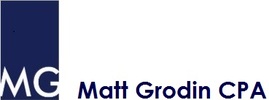|
Self-employed individuals have more options when funding their retirement. Regular IRAs and Roth IRAs are available - so, for smaller amounts, see the blog below on that topic. 4 options for larger amounts of contributions include SIMPLE IRAs, SEP IRAs, Solo-401ks, and Defined Benefit plans.
Target group for each type of plan
https://www.fidelity.com/retirement-ira/small-business/compare-plans SEP vs. Solo 401k For most of my self-employed clients, the question is usually around SEP or Solo-401k plans. Why is one better than the other if they have the same limits? You can hit the limits MUCH faster with a solo-401k. With both plans, you are permitted an 'employer' contribution of about 20% of your net business income. I say about, because the calculation is a bit more complex. but with a solo-401k, you can also contribute the employee portion of up to $18,000 or $24,000 depending on whether or not you have reach 50 years of age. For example, if your schedule C income was $100,000 this year, you could contribute about 20,000 to your account with a SEP, or (20,000 + 18,0000) to your account with a solo-401k. Why would anyone choose a SEP? I see three reasons:
0 Comments
Leave a Reply. |
Author
Archives
December 2015
Categories |
T 650.342.4394


 RSS Feed
RSS Feed